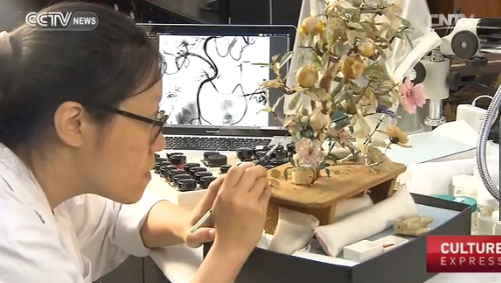In Taipei today, crowds are flocking to the Palace Museum to see its priceless treasures, and they are paying tribute to the immortals of Chinese art. But now it is time to sing the praises of those backstage heroes who make it all possible—the restorers and archivists. The Taipei Palace Museum recently invited 21 restorers to repair more than 700,000 relics, including painting utensils and textiles.

The Taipei Palace Museum recently invited 21 restorers to repair more than 700-thousand relics, including painting utensils and textiles.
Using the microscope and surgical scalpels, the restorers are not operating on a human body, but on ancient treasures. It requires equal precision and patience, however. And for the restorers, they get emotionally attached to many of the pieces they work on.
“I’ve been working on this bonsai for four months. It's relatively easier than the other ones,” said a restorer.
Although the restorers are repairing ancient pieces, they also have to keep pace with modern technology and constantly learn new methods. For instance, this restorer has to first study this jade bonsai's X-ray, before proceeding with the repair work.
“For example, in the utensils categories, there are bronze ware, ceramics or a combination of different materials, we have to know each of the materials well to repair them,” said Lin Yongqin, researcher Taipei Palace Museum.
Repairing relics also takes a lot of patience and this is especially so when it comes to paintings. The first step is to rinse the painting using warm water in order to remove layers of paper attached to the back of the painting.
“This one is in really bad condition, and we can’t peel it off as a whole, so I can only peel the layer off bit by bit, so the original painting won’t be damaged,” said a restorer.
The restorers have also made glue with different formulas for different kinds of relics. The pieces are expected to meet the public soon after the repair work is completed.















